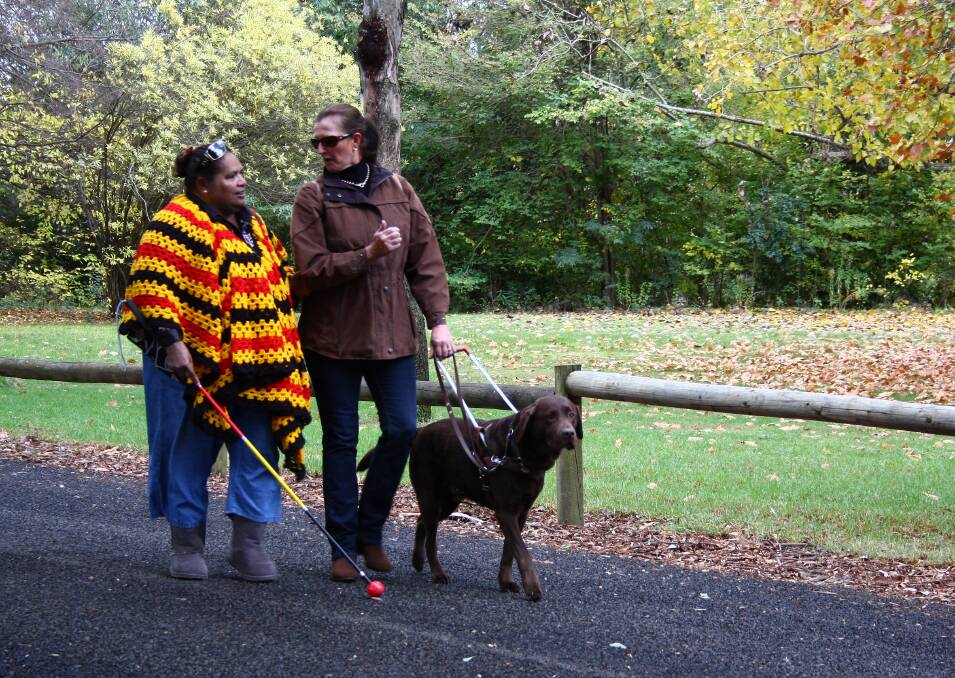
Local Aboriginal Elder Aunty Mary Hooker is set to feature in a new book of 60 short stories which celebrates the 60th anniversary of Guide Dogs NSW.
Subscribe now for unlimited access.
$0/
(min cost $0)
or signup to continue reading
The book features stories about people with sight loss whose independence has been enhanced by having a Guide Dog and other mobility services, and celebrates those who have bred, raised and trained our dogs.
In the book Aunty Mary – a Rylstone local – explained that she has diabetic retinopathy, a common complication of diabetes that effects vision.
She first experienced the effects of the eye problem in 2007, when her vision in her left eye began to deteriorate, before her right eye also failed and she was declared legally blind in 2010.
“One in six Aboriginal people are affected by diabetes. Out of my family of 12, eight of us have developed diabetes although I’m the only one who has gone blind,” Aunty Mary explained.
“I wasn’t taking my medication properly, mainly because I didn’t have enough money. I had to give up work, and what money I did have was used for bills and food for my kids and grandkids. I would always look after myself last. Finally I found a chemist who let me pay in instalments.”
After her loss of sight, Mary turned to the Guide Dogs NSW program to regain some of her freedom.
“I didn’t call straight away as I didn’t want a dog and I thought that was all Guide Dogs NSW could do to help me. I didn’t realise at first that they could help me in other ways,” she said.
“When I did call them I asked to have my cane in the Aboriginal colours and they’d never had that request before. That same year they made me an ambassador for Guide Dogs NSW so now I travel around and spread the word about all the ways the organisation can help people with vision impairment.”
Having lost so much because of her blindness, Aunty Mary is passionate about educating young Indigenous children on how to take care of their sight.
“Your sight is the one thing that can’t be replaced. The worst part is not being able to see the faces of my children and my grandkids. When my daughter got married, I couldn’t see her wedding dress. She described it to me and I could feel it, but it wasn’t the same,” she said.
“It’s so hard not being able to watch the kids grow up. I go to all of their events at school and they’re always keen to help me and guide me, but I can’t see their faces.
“That’s why it’s so important for Aboriginal people to keep their sugar levels stable, take their medication when they’re meant to take it, and listen to their doctor when they explain what to do to stay healthy.”
The book is set to launch at 10.30am on Monday, September 18 at the Sydney Opera House’s Utzon Room, where there will be a morning tea and a celebration of the release of the collection.
Aunty Mary has also knitted the world’s longest scarf in Aboriginal colours, and is currently in the process of trying to take out the Guiness World Record of 13 metres for the scarf.


